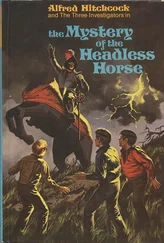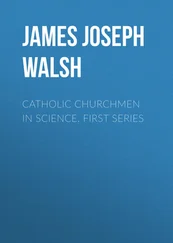1 ...8 9 10 12 13 14 ...19 So how did she come to stand upright?The main anatomical transformations pivot around the pelvis, where the powerful gluteus maximus of our buttocks, a minor player in our primate cousins, pull the human form upright like a drawbridge. This novel stance must then be held in place by a redesign of several other muscles that fulfil a propulsive function in our primate cousins, but need to act as stabilisers of the human skeleton. For that to happen, the bony pelvis to which they are all attached must itself undergo a major redesign, being first pulled up and back, then shortened and widened.
This redesign of the pelvis and its stabilising muscles entails a further series of knock-on effects: the skull must now be repositioned directly over the erect human frame, while the vertebrae of the spinal column must become progressively wider as they descend, to sustain the weight pressing upon them. The head of the femur (as noted) must be angled inwards, the ligaments of the knee strengthened to ‘lock’ into position, while the foot, particularly the big toe, must undergo a dozen anatomical changes to provide a firm basis of support. The arms, that no longer need to swing through branches, become shortened, while the legs, now proportionally too short relative to the body, must be lengthened – but by how much? There is, it would seem, an ‘ideal’ lengththat creates a pendulum-type movement of the legs, like the pendulum of a clock, where walking becomes almost automatic, the combination of the force of gravity and inertia carrying the body forward with hardly any intentional muscular effort. ‘The human frame is built for walking,’ observes the biomechanist Tad McGeer. ‘It has both the right kinematics and the right dynamics – so much so in fact that our legs are capable of walking without any motor control.’
And that shortening of the armsand lengthening of the legs for walking gives the symmetry and harmony that reflect the hidden laws of geometric proportion captured by Leonardo da Vinci’s famous ‘Vitruvian’ image of man, his span matching his height, encompassed within the two most elemental of shapes – the circle and the square. ‘It is impossible to exaggerate what this simple-looking proposition meant to Renaissance man,’ the art historian Kenneth Clark observed. ‘It was the foundation of their whole philosophy,’ where man was ‘the measure of all things’.
These, however, are merely the obvious anatomical changes, as Lucy would still be quite unable to stand upright without both a rewiring of her nervous system to cope with the flood of feedback information from the millions of sensors monitoring the relative position of the bones and muscles, and a more sophisticated circulatory system. Thus, those obvious similarities that so impressed Darwin and Huxley conceal a myriad of hidden but necessary modifications, because there can be no change in one structure without influencing many others. The hundreds of different bones, muscles and jointsare ‘inseparably associated and moulded with each other’, the distinguished twentieth-century biologist D’Arcy Wentworth Thompson would observe. ‘They are only separate entities in this limited sense that they are part of a whole – that can no longer exist when it loses its composite integrity.’
Lucy was already an experienced ‘bipedal walker’, as shown by those emotive footprints in the volcanic ash – so we must presuppose, if Darwin’s evolutionary theory is correct, numerous preceding species of hominids marking out those anatomical changes from the rock-like stability of the knuckle-walking primates to her own upstanding, pole-like form. We can only speculate how those changes occurred. The strengthening of the gluteus muscle was essential to ‘raise the drawbridge’ – but it would have been quite unable to do so without the simultaneous redesign of the bones of the pelvis and upper thigh, the ligaments to lock the knees, the adaptation of the foot to standing upright, and so on. Thus the biological advantage of ‘freeing the hands’ would be more than offset by the profound instability of any transitional species, that without this full house of anatomical changes would have had a stuttering, shuffling gait – vulnerable prey to any hungry carnivore it encountered when tottering across the savannah. Put another way, the necessity for these many anatomical changes confirms what one would expect: the upright stance is staggeringly difficult to pull off, which is presumably why no other species has attempted it. Standing upright is, on reflection, a rather bizarre thing to do, and would seem to require a sudden and dramatic wholescale ‘redesign’ that is clearly incompatible with Darwin’s proposed mechanism of a gradualist evolutionary transformation. Lucy’s pivotal role in man’s evolutionary ascent as the beginning or anchor of that upward trajectory would seem highly ambiguous.
These difficulties seem less acutewhen we turn to that second evolutionary innovation, represented by Turkana Boy’s larger brain, which would at least have conferred the obvious advantage of greater intelligence – and progressively so, each incremental increase in brain size and intelligence furthering his chances of survival. Except, there is no direct evidence for the benefits of that greater intelligence, other than those stone tools which, for all their technical ingenuity, remained virtually unchanged for two million years. The human brain started to increase in size, and continued to do so over a period of several million years, with precious little to show for it until right at the end, with that extraordinary intellectual leap of the Cromagnons’ ‘cultural explosion’. Why, one might reasonably ask, should man’s evolutionary progress equip him with powers he would not realise for so long?
This is no mere rhetorical question, for man, during his Ascent, paid a heavy price for that expanding brain, which together with standing upright would massively increase the risk of obstetric catastrophe in childbirth – a fact that could scarcely be more biologically disadvantageous to the survival of his species. A simple diagram of the foetal head passing down through the bony pelvis explains all.
The main effect of the reorientation of Lucy’s pelvisto permit her to stand upright is to transform a straight and shallow ring of bone into a deep, curved tube. First we note the situation for our primate cousins, the chimps, where there is a generous margin around the foetal head. Next we see the much tighter fit of Lucy’s pelvis, which becomes a potentially lethal crush for both mother and infant. And further, the foetal head must now overcome the greater resistance of the mother’s much more powerful pelvic muscles, strengthened to retain her internal organs within the abdomen against the downward force of gravity. A million years on, and the ‘bigger brain’ of Turkana Boy further compounds these difficulties, so now it requires massive protracted (and very painful) contractions of the muscles of the uterus (ten times more powerful than in other mammals) to force the foetus down that ‘deep, curved tube’, causing potential damage to the pelvic muscles, bowel and bladder. The predictable consequence of all this is that while the chimpanzee can give birth on her own, almost without breaking stride, humans right from the beginning would have required the assistance of others to support them in this most traumatic of all human experiences – with a mortality rate of 100 per cent for both mother and child in the not unusual circumstance of obstructed labour.
And that is only the beginning, for the human brain continued to increase in size, which would have created an insurmountable obstacle to reproduction were it not for the extraordinary evolutionary ‘solution’ of slowing the growth rate of the foetal brain within the womb, and accelerating it afterwards. From Turkana Boy onwards, the human newborn, with its now relatively immature brain at birth, is completely helpless, and it will take a further year and a half before it starts to acquire the sort of motor skills that permit the newborn infant chimp to hang on to its mother’s back. And that dependency in turn would require that further unique feature of humanity, the long-term pair bond between mother and father, hinted at in those footsteps in the volcanic ash, to share the responsibility for carrying, caring for and feeding their dependent offspring.
Читать дальше












